Wildfrost is a new dungeon-crawling card game from Chucklefish (out now for PC and Nintendo Switch), and it has many fans of the genre obsessed. I’d call myself a casual card game player. Having thoroughly enjoyed Legends of Runeterra and Slay the Spire, I was intrigued by Wildfrost and wanted to see how it measured up to the established classics.
After playing for 50 hours, I can confidently say that Wildfrost has quickly become one of my favorite deck-builder card-battling games and possibly one of the best currently available on the market.
What Makes Wildfrost Great?
Wildfrost is an extremely challenging game. Unlike in Runeterra or Slay the Spire, where I can expect to win most runs I play, the expectation in Wildfrost is to lose to the AI. For the first 10 hours, I absolutely hated it. I despised how difficult the game was. I didn’t understand why I was consistently losing, and I felt that my decks weren’t getting stronger. However, after my first win, I was hooked.
Let’s start at the beginning.
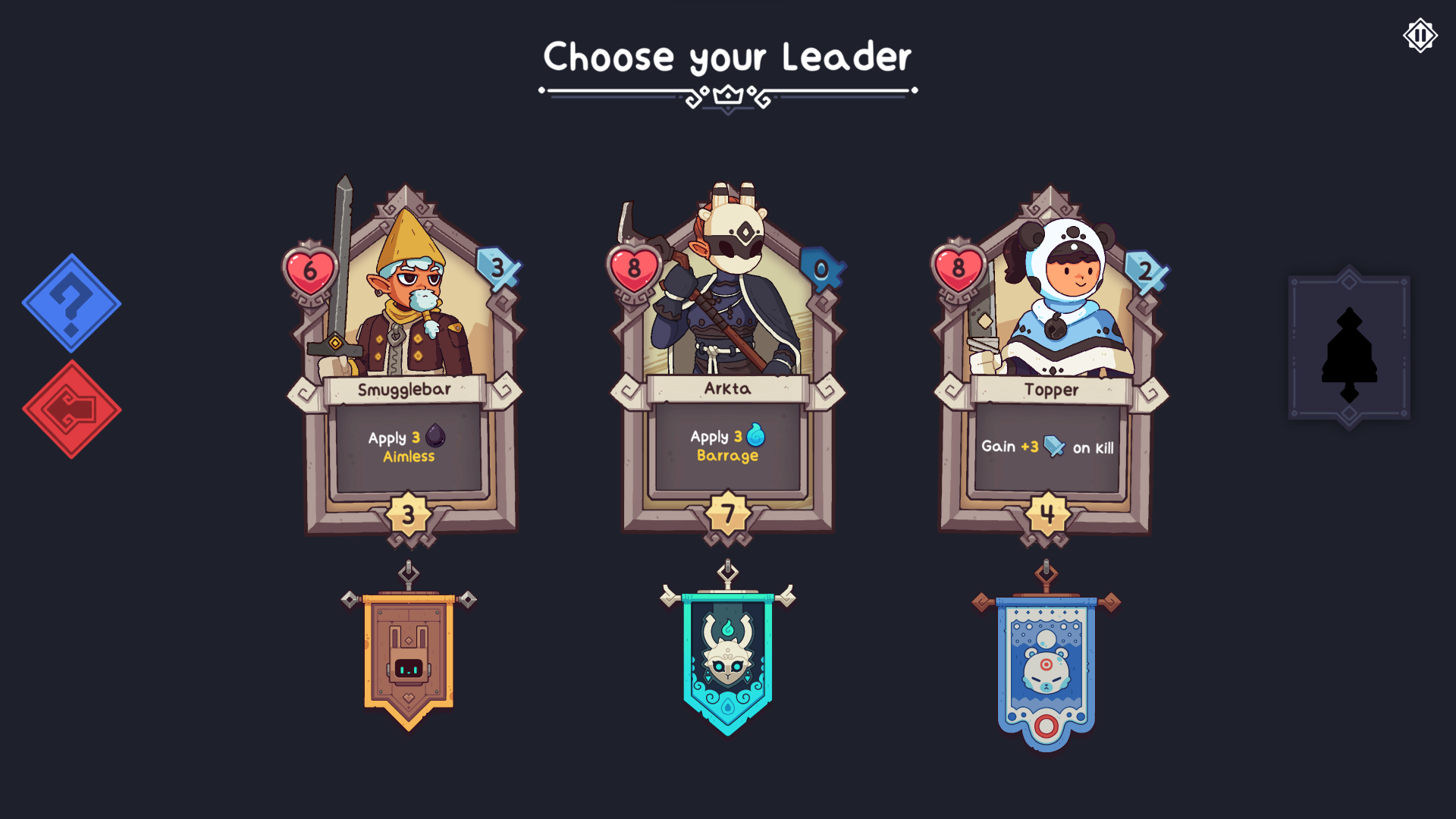
The Joy of Randomness
In Wildfrost, you play as a different “hero” for every run. You have three options to pick from when starting the game. In the first few runs, you are limited to heroes from the “frost” region, but as you play and earn accomplishments, you can unlock two additional regions with different heroes and abilities. Your starting deck is always relatively simple and is based on the region your hero is from.
I quickly found that I enjoyed the random nature of the hero selection for each game. Unlike Slay the Spire or Runeterra where players have the same options for their starting hero each game, Wildfrost provides a bit of mystery each time you click “play.”
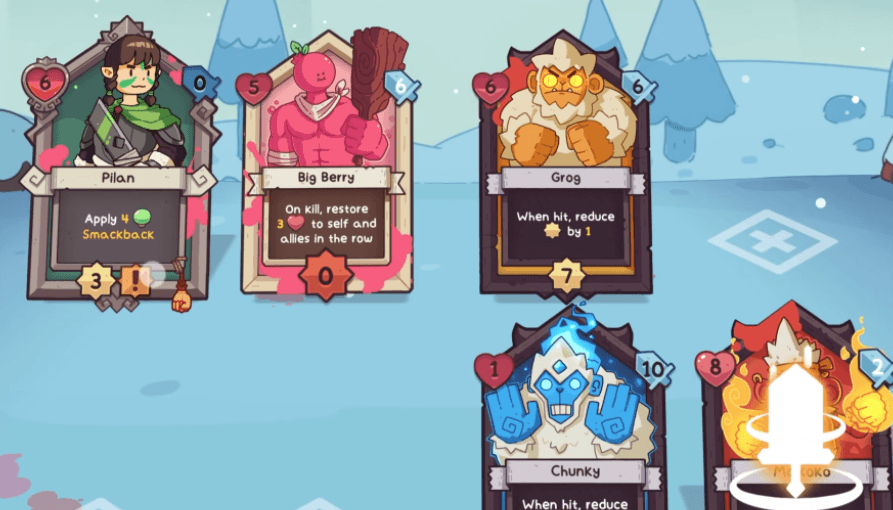
Similarly, as the player goes through the map, they’ll encounter random chests, events, and merchants/shops that never offer the same cards in back-to-back runs. There have been countless times when I began a game with an ideal build in mind, and found that it just wasn’t possible for me to build that deck since I did not encounter the cards required. Wildfrost requires the player to have adaptability and thorough game knowledge, unlike any card game I have played before.
Ever-So-Charming
Most card games include the ability to buff cards in one way or another; in Wildfrost this means adding “charms” to your cards. A player can get charms from encounters with charm machines on the map, or by buying them for 50, 70, or 100 gold at the shop. After unlocking a certain achievement, players unlock the charm merchant encounter and can also purchase charms from the charm merchant.
In the general shop and at charm machines, charms are always random. This can be frustrating when the charm drop is one that doesn’t work in your build whatsoever. Adding the right charms to your most powerful cards is important if you want to win your run. I have had decks that I built that were dependent on me getting one charm in particular; when I didn’t get that charm, I lost.
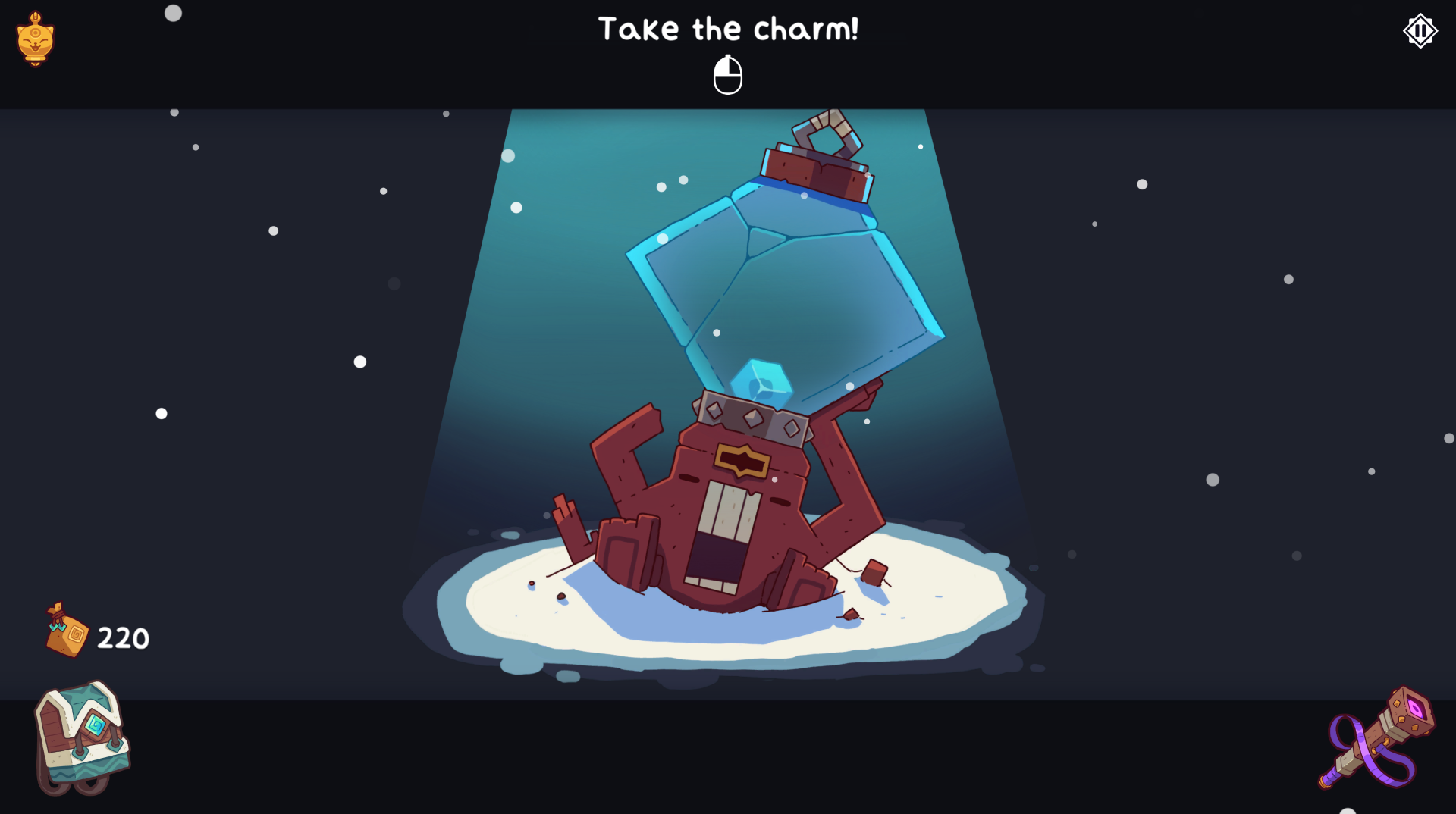
However, the chance aspect of the buffs/charms is what makes this system in Wildfrost exceptional. Every time I entered a charm machine encounter, or clicked “purchase” on the charm machine in the shop, I got a little rush of adrenaline and hope. Unlocking the charm merchant feels like major progress in the game, and players in the community absolutely adore her as she has the ability to save your entire run.
Players can only add a total of three charms to a card, so it is important to be aware of which charms you want to use on each card. I’ve kicked myself for adding lesser charms to my important cards thinking that I wouldn’t get a better one, and then not being able to add a more powerful charm to my preferred card later on.
The best comparison for charms is the “upgrade” system in Slay the Spire where a player can select a card to upgrade at a rest site. I have always found the card upgrades in Slay the Spire to be underwhelming, as it never really changes the mechanics of the card. Wildfrost gives players the ability to essentially change a card completely by adding charms. It adds significantly more flexibility and excitement to the game.
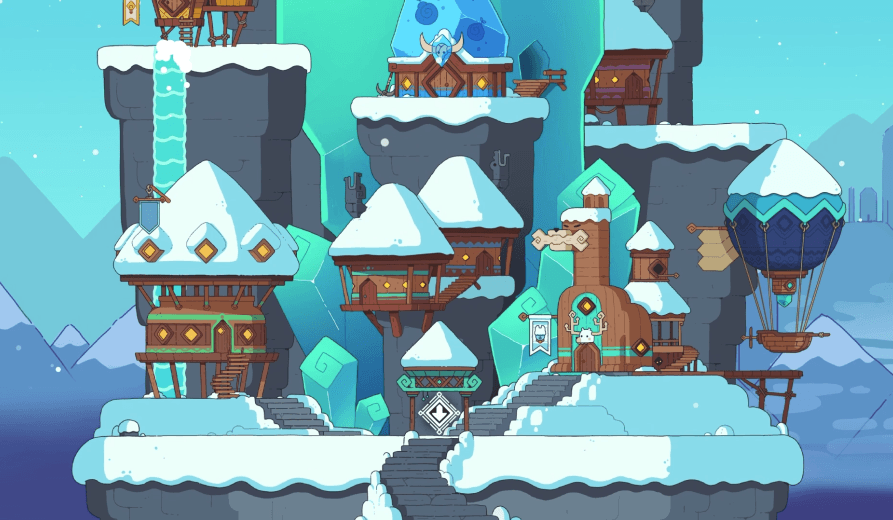
How to Win at Wildfrost
After my first win (which took about 15 runs to achieve) I was on a high. I jumped back into the game with a renewed fervor. I felt that I finally understood the game, I knew the perfect cards to pick for my deck, and I was confident going forward in my next runs. What I didn’t realize is that each time the player wins, the boss at the end becomes your winning deck.
Your Own Worst Enemy
After the first win, your hero ascends as the “Frost Guardian,” replacing the original boss. It took me at least five games to build a deck that could beat my previous winning hand. I was so excited when the last hit went off on my previous ascended hero… only for the boss to then transform back into the original frost guardian.
To win after your first victory, you have to defeat BOTH the ascended hero and the frost guardian. This is no easy task, particularly if your build does not involve healing or shielding of some sort. This mechanic was a challenging but fun twist on the genre.

How to Get Gold in Wildfrost
One of the biggest challenges in Wildfrost is gold management. The game offers a few different avenues for earning gold, and I discovered early on that gold was an incredibly valuable resource. Figuring out ways to get combo kills on enemy cards, taking paths with bugsnail caves, and saving gold where possible provided me with significantly better outcomes in my runs.
The best way to earn gold in Wildfrost is through the combo bonuses a player gets when killing multiple enemies in the same round. This is relatively easy in the very first battle if you get the “penguin” encounter. However, after that, combo kills become increasingly more difficult to achieve. As you go through the map, enemies gain more health, higher attacks, and better special abilities. I have lost runs overextending my hand in an attempt to get combo kills. I have found though that if my deck loses early on in an attempt to get more gold, it was unlikely to win anyway.
What Are Some Criticisms of Wildfrost?
Wildfrost might have won me over, but it isn’t for everyone. Here are a few of the game’s biggest shortcomings.
It’s Too Challenging
By far the biggest criticism of Wildfrost is that the game is too challenging. As I stated earlier, I genuinely wanted to stop playing on numerous occasions during my first 10 hours. I had a desperate determination to figure out the game, and I hated that it made me feel stupid, so I continued to play. But, looking through the Steam reviews for Wildfrost, this is the most common complaint, and the reason a lot of players can’t stick with the game.
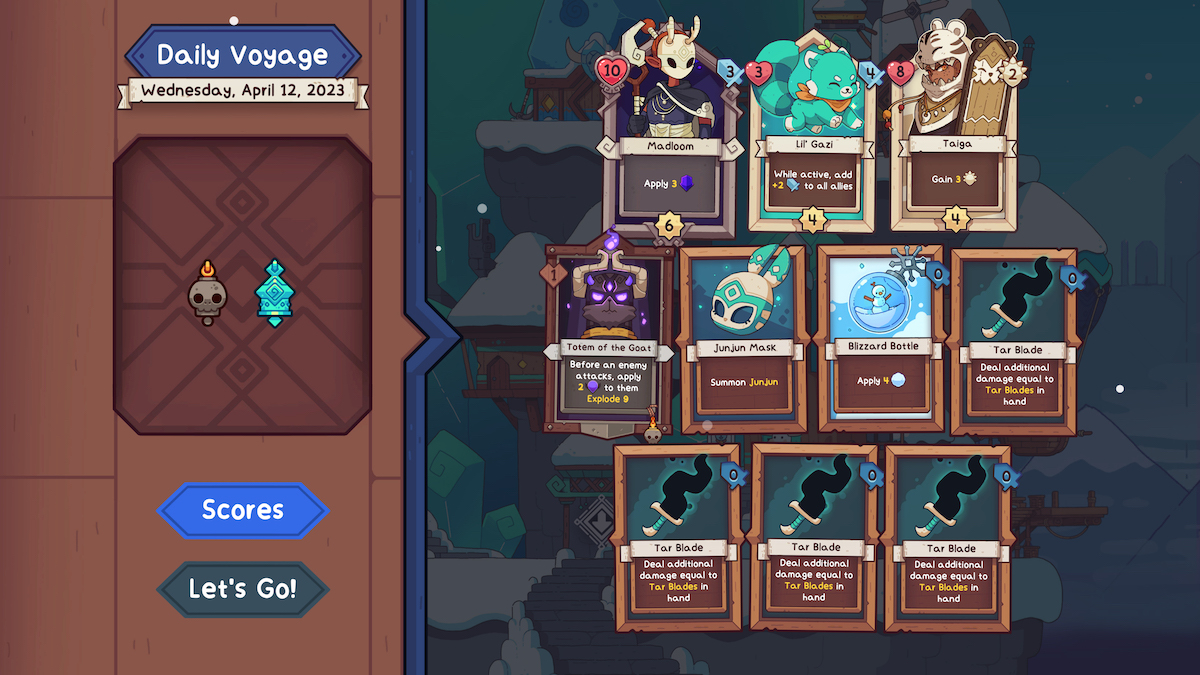
It Needs More Unique Cards
I do believe there are some things that would make Wildfrost more appealing in the card game community. Wildfrost has an extremely limited number of card options when compared to other deck-builders. Especially compared to Runeterra, the card game that introduced me to the genre, the card options seem underwhelming. While there is an element of random chance to the game, after playing for about 20 hours the player will have encountered every card in the game multiple times. This does make it easier to win, as you know more or less what each card does and how it will interact with various buffs and heroes, but it makes it a bit less exciting. I think adding more cards and support champions would make Wildfrost a more interesting game.
Wildfrost is a relatively new game, and even in the few months it has been out, there have been additions/changes made, so I do expect the game to continue to evolve and improve.

A Strange Design Choice: The Journal
One of the major problems I have had with Wildfrost from my first playthrough is the journal that is kept throughout the game. When the player selects their hero for their run, the hero’s name gets written into a journal. Each hero has his or her own unique name, and so far, I have not encountered the same name twice.
When the player loses, the hero’s name is crossed out and made grey on the journal page. This never disappears. Each time you start a game you are reminded of all the heroes that you essentially got killed. I haven’t seen a lot of discourse about this in the Wildfrost community, but as a sentimental player, it hurts my heart just a little bit every time I have to see the journal page filled with crossed-out names. When a player wins a run, the hero’s name gets lit up in purple and includes a “?” next to it. This doesn’t feel like a great counterbalance to the crossed-out names, especially considering how difficult it is to build a winning deck.
Final Thoughts
Wildfrost is definitely worth investing in if you enjoy deck-building games. However, I wouldn’t recommend it for those unfamiliar with the genre. It’s too difficult for inexperienced players and could ruin a newcomer’s interest. However, if you are looking for a challenging card game, Wildfrost is the perfect candidate for you.
The game’s style is adorable, and the characters and animations are super cute. The card designs are excellent, and the game has had consistently good updates. The Wildfrost community on Discord is relatively small but very welcoming and nice. It has been fun to read what other players have struggled with and which builds are working for them.
I love supporting Chucklefish’s games, as Starbound is (and will always be) one of my favorite titles. With Wildfrost, it’s clear the publisher’s partnership with Deadpan Games and Gaziter has been a fantastic success. There’s a lot to love about this game, and I hope that it gains popularity outside of just the deck-building community.
Score: 8.0/10
Bella is an avid gamer who has been obsessed since her first experience with her Game Boy Advance when she was 7. She plays League of Legends daily and is a huge fan of everything Riot Games. Bella also loves farming sims and is always trying out new games from the genre. She is currently pursuing a degree in journalism and hopes to eventually work as an esports caster.







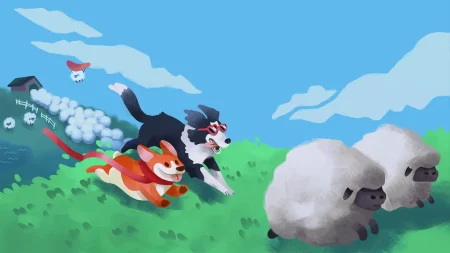

1 Comment
Great review!!